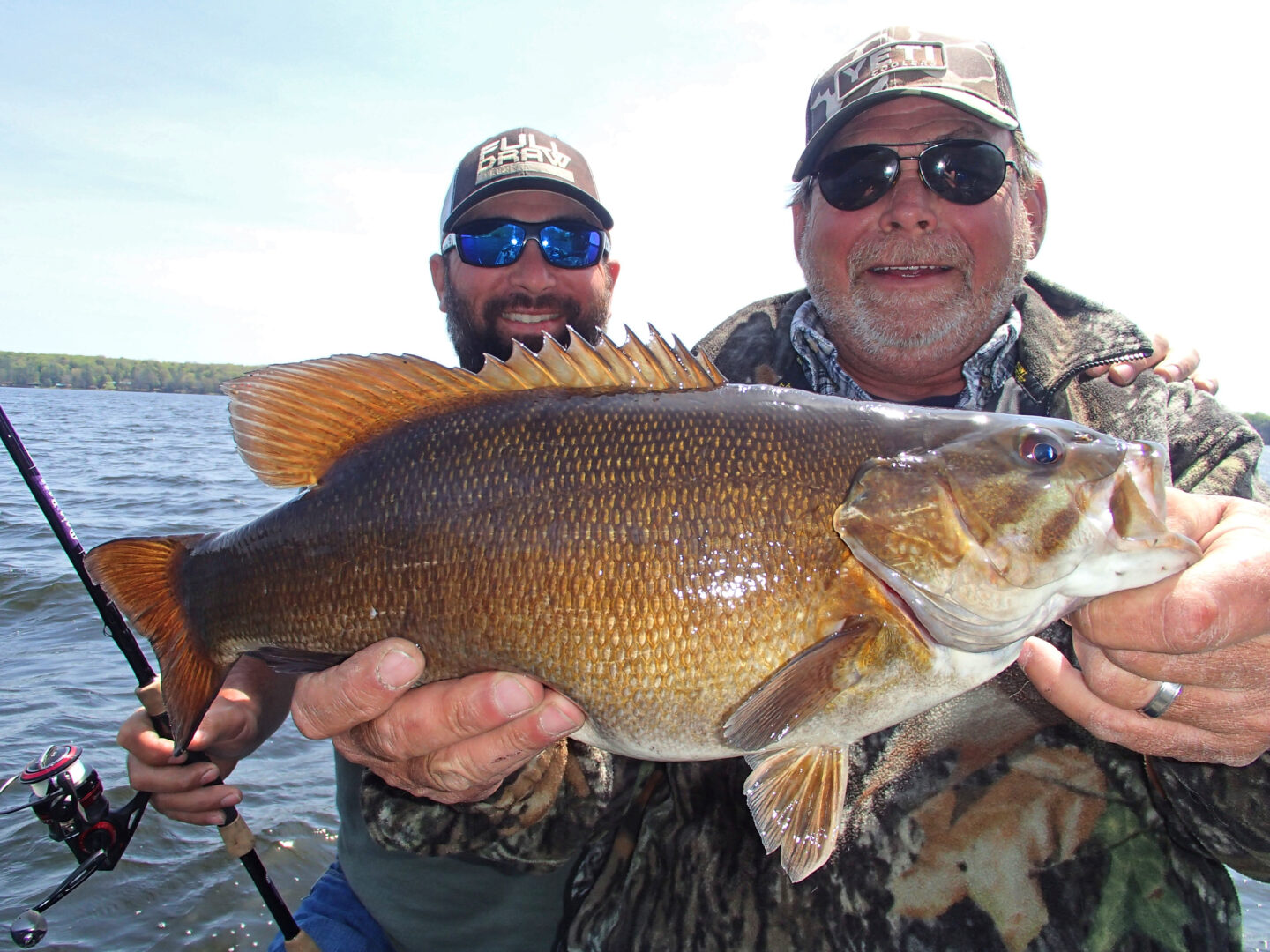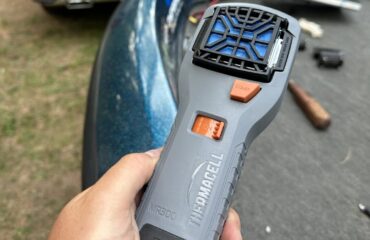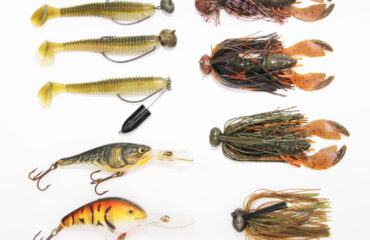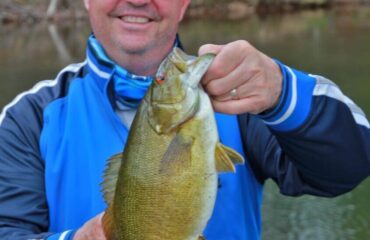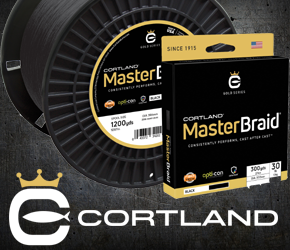Smallmouths on Point
Whether fishing a lake for the first time, or for the thousandth time, visiting its points is a shortcut to immediate fishing success. These topographical lake structures provide smallmouths with a multitude of benefits that are essential for feeding, homing, and survival.
Structure-oriented by nature, smallmouths gravitate to points because they create a bridge connecting the shoreline to open water. Points are their structural highways and staging locations during the spring and fall seasonal migrations, linking shallow water locations to the lake’s deepest basins. All year long, smallmouths will utilize the specific locations and depths of points for staging, spawning, and wintering.
Points are readily visible to the naked eye. Studying a lake’s aerial and topographical maps, Lowrance C-Map chart, and Navionics, points are commonly the most obvious and prominent structures of lakes. Not every lake was blessed and created with structural features, nor has them. These shore extensions create contour and underwater irregularities, attracting both fish and anglers overhead.
Points Defined
By definition, points are land and shoreline extensions protruding inward to the lake. They’ll encompass a primary point and secondary point before eventually proceeding downward to the lake’s basin.
My favorite points on northern lakes have a happy-medium of minimalist barren bottom with just enough features that’ll attract smallmouths.
Across many northern smallmouth fisheries, I’ve identified three kinds of points that are common to my waters.
FLAT POINTS – Most common on low-land reservoirs and flowages, and shallower lakes, these points are defined by a gentle slope that runs into the lake before its drop-offs lead into deep water. Flat points are attractive to smallmouths in spring for staging and spawning.
GRADUAL POINTS – These structures have a greater depth and more moderate descent into deep water. Gradual points are most common on natural lakes, encompassing additional structures that could include rock piles, boulders, cribs and spot-on-spot targets. Smallmouths tend to spawn along their edges and tops if they offer suitable depth and protection. These are frequently visited by fish throughout summer and fall. Wintering can be possible past its deepest edges.
DEEP POINTS – These have a steep trajectory and also encompass a secondary break. Drop-offs are sharp and ledge-like, often leading into the lake’s basin towards its deepest waters. These main lake locations are most common on large, deep lakes. Smallmouths are attracted to these points in summer, and are prone to use the deepest features for wintering.
Flat Point
Due to their prominence and visibility, points are subjected to increased fishing pressure, which can condition and disperse smallmouths to other points located throughout the lake. Not all points are created equally either. Some are featureless, while others contain additional structural and habitat elements that further attract smallmouths. Further complex, smallmouths might not always hold on these structures altogether, moving on and off them or become pelagic.
Topographical Breakdown
Underwater habitat enhances the appeal of a point to smallmouths. Wood and cabbage can turn an otherwise featureless sand point into a fish magnet. Rock and boulders can also turn ordinary points into spectacular spots.

Just look at all of these boulders situated along the deep edges of this point!
On sand points, I’ve found the presence of broad-leaf cabbage and marginal grass to be attractive to large smallmouths. The combination of additional habitat attracts prey fish including yellow perch, a favorite meal.
Points with rock piles scattered throughout the top and sides, and boulders on the deepest edges, attract more smallmouths and are most reliable to fish throughout the year. Smallmouths use these kinds of points during all seasons.
Meanwhile, points featuring stumps, logs, and cribs are also attractive. Many anglers continue to improperly fish them, not realizing that cribs are commonly strategically placed along their deep edges.

Wood scattered along any point like this is a fish magnet.
Topographical irregularities are attractive to smallmouths. The largest, most expansive points tend to feature inside turns and the most depth fluctuations. If the point is otherwise featureless, smallmouths will favor the contour.
Despite receiving the most fishing pressure, we continue to catch large smallmouths from points.
Working points on a lake with higher boating traffic and fishing pressure is a constant and frustrating challenge. On these waters, I try to avoid daytime fishing and summer weekends altogether. Or I will only fish them after dark when everyone else is off the water. Instead, my focus is on smaller, non-descript points that might have never been produced on lake maps and charts. Several inland lakes contain these spots. Most anglers fish only the most prominent points of lakes, ignoring the others. Study the lakes further, and you’ll find them containing many smaller points that get bypassed. Smallmouths also visit them regularly. They won’t load frequently, but yield lots of fish especially in spring.
Flat Point
Approach and Strategy
Lakes can have only a handful of points. Others can have up to a dozen or more. Some bowl shaped lakes could have none at all. Large reservoirs meanwhile, are capable of containing hundreds. Choosing which point to fish can be confusing. Some are obvious to the eye, others cannot be found without electronics.
To search and scour through a point, idle along its deepest edges, maintaining a distance from several yards away to avoid smallmouths detecting your presence.
Utilizing a combination of C-Map and Navionics charts aids in my boat’s navigation and maneuvering around the structures. Some lakes are more accurately charted and detailed on Lowrance C-Map, while others are better detailed on Navionics. Use them both, but trust neither. You’ll be surprised by the major differences between both charts, even if both softwares are most-recently updated.

With my Lowrance HDS-12 Live, I rely most on side-imaging to dissect the point’s physical features and fish holding areas, and study its inclines and depth. I’ll adjust the range of side-imaging based on my distance from the point’s top.
The HDS-Live’s Active Imaging transducer clearly displays bottom composition and features, visibly indicating the point’s fish-holding areas that could include rock piles, cribs, boulders, and grass. I’m also able to pick apart fish that could be using them. Active Imaging delivers superb clarity and the highest resolution images of fish and structure at a longer range than any other comparable structure-imaging technology.
As you prepare to fish the point, fish its perimeter and deepest edges first before moving shallower. During the summer months, smallmouths are likely to suspend over open water. On more pressured waters, smallmouths are prone to spook when boats approach them too close. Remember to fish deep first, and target its top and shallowest depths last. Too many boats bulldoze into points immediately, spooking fish, rendering it worthless to fish.

Progressing further to the point’s top, keep the boat positioned deep. You can maintain stealth and avoid spooking shallow smallmouths. Make long casts up to the top. From long distance, smallmouths can be oblivious to your presence. They’re willing to track baits from long distance before eventually striking.
Smallmouths located atop of points tend to be the easiest and most catchable. When smallmouths are positioned on top, they’re likely aggressively feeding. Smallmouths will slide deeper when inactive, or if pressure is sensed. It’s critical to attack these fish early and late, and also in low-light conditions. When water temperatures are at an ideal setting, smallmouths move on and off several times throughout the day.
Work the entire point from deep to shallow, and vice-versa. Dissect its edges and all sides too. Additionally, attack the point from various casting angles. If one angle doesn’t work, attempt another before moving on. Current, wind, light levels, and fishing pressure can each alter how smallmouths are positioned.
Fishing strategies and presentations change seasonally. All lure selection should be based upon the depth of fish and their activity level, water clarity, bottom composition, and wind as primary factors. Lots of fishing scenarios are possible. Here are some of my strategies.
In clear water, bass are likely to suspend off the structure. We catch these fish by covering some water first with deep suspending jerkbaits such as a Rapala Shadow Rap Deep. Next, we swim and slow roll paddletails and swimming grubs through the water column. 5” Kalin’s Lunker grubs in translucent patterns are unbeatable. Last, if fish are suspending below the boat, moping (damiki rigging) with soft jerkbaits catches them best. Fishing will turn into a video game with reliance on your electronics.
If smallmouths are holding along bottom and positioned near the point’s best structural elements, maintaining bottom contact will be your priority. Tube jigs, football jigs, drop-shot rigs, craw imitations, and jig worms are each effective and hard to put down.
Early or late in the day, and overnight, smallmouths will visit the tops of the bar for feeding. We catch our biggest fish of the summer season fishing after dark, running noisy squarebill crankbaits and topwaters across the top. The Rapala X-Rap Pop and Skitter-V are my favorites, pushing a lot of water and creating a commotion necessary to trigger the reaction. Once they condition, or when less active, I like to drag swinging head jigs across the bottom, Texas rigged, with crayfish imitators and creature baits. Preferred baits for the swinging head rig are the Gene Larew Biffle Bug, Bizz Baits Bizz Bug, and Strike King Rage Bug. Grind and scuttle the rig along bottom with a slow retrieve, stirring up sediments. The allure of this rig is that crayfish are abundant and active during nighttime hours. Smallmouths will have a hard time noticing it’s artificial.
In spring, smallmouths exclusively use points as staging sites and for spawning purposes. Suspending jerkbaits such as Rapala X-Raps in 08 and 10 sizes, and Dynamic Lures J-Specs are all you’ll need.
In windy conditions, throw baits that will enable smallmouths to track them successfully. Deep diving crankbaits that will reach their holding depths are the best tools for structure. If fish are positioned shallower, running a heavy spinnerbait such as a ½ oz. Freedom Tackle Corp. double willow works very well. You can also catch fish on paddletails swam in single, or in tandem with the Alabama rig. Wind positions smallmouths into predictable places when they’re associating to points and triggers aggressive feeding behavior.
When there’s no wind, smallmouths could abandon the point and retreat to deep water. Or they might hold, and cruise the tops, but be negative or neutral. Casting marabou hair jigs and spy baits can entice them.
In mid-summer through fall, smallmouths can school heavily. Pay attention to your locator in determining whether bottom baits or suspending baits are the best course of action.
Are smallmouths wintering off the point’s deepest edge? Cast football jigs and work them along bottom. If vertical presentations are possible, bites are triggered with blade baits. 3/8 oz. Damiki Vaults, and ½ oz. Freedom Tackle Corp. Blade Bait are my options. In case nothing is working, Lindy Rigging with live minnows on offset-lancet circle hooks can be a fun trip-saver.
Suspended Fish
In clear water, bass are likely to suspend off the structure. We catch these fish by covering some water first with deep suspending jerkbaits such as a Rapala Shadow Rap Deep. Next, we swim and slow roll paddletails and swimming grubs through the water column. 5” Kalin’s Lunker grubs in translucent patterns are unbeatable. Last, if fish are suspending below the boat, moping (damiki rigging) with soft jerkbaits catches them best. Fishing will turn into a video game with reliance on your electronics.
Smallmouths on Point
A working knowledge and strategy of seasonal patterns will tell you how to best approach every point. Learning and observing how smallmouths associate to them will dictate fishing success.
Points play a major role in the life of smallmouths. Be mindful also that they play major influence to smallmouths that are in transition also. These periods are spawning season, summer pattern, and wintering. On the lake’s prominent points, fishing productivity will last year-round. Prioritizing points of all shapes and sizes on every lake will be your gateway, opening up the doors, into its smallmouth fishery.
Smallmouths on Point
Andrew Ragas splits time between the Chicago area and Wisconsin’s Northwoods. Based in Minocqua, WI, he specializes in trophy bass fishing and offers guided trips from May thru October. While big bass is the passion, he dabbles in multi-species as well. He may be visited online at www.northwoodsbass.com


